Every December, compilations of creepy vintage Santas go viral online, as people laugh at terrifying Saint Nicks culled from family photo albums, old print media and the depths of the internet. These Santas’ eyes are either dead or filled with an infernal rage, and their beards are either unconvincing or all too convincing, more evoking a wild man of the woods than a saint dedicated to rewarding good children and punishing bad ones: one almost suspects that meeting some of these Santas was the punishment!
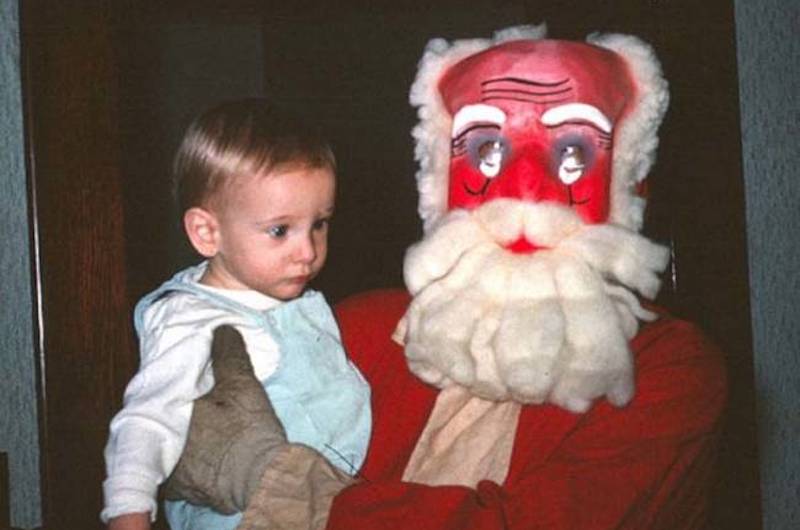
Some of the scariest Santas wear masks, giving the impression either of the reanimated dead, or of something alive but unwholesome lurking within. It’s those masks that we want to talk about. As is the case with so much around Christmas, they seem to be a modern, urban survival of a much older and rural custom, drawing on not just the Christian St. Nicholas, but on various, sometimes pagan winter guising customs found across Europe, in which scares, disguise and disruption are often intentional and prominent.
Over the years, with immigration and urbanisation, Saint Nicholas customs from different times and places met and merged with each other and with new ideas from literary culture and illustration. As the 20th century wore on, both Santa Claus in the UK and US, and Sinterklaas in the Netherlands, became familiar and homogenised due to mass media advertising. But in small communities, costumes would often have been improvised with what was to hand, and the collective memory of earlier traditions may have been less diluted, and clinging on tenaciously – as indeed happened in the northern Netherlands. This too must eventually have fed into commercial Santa masks.
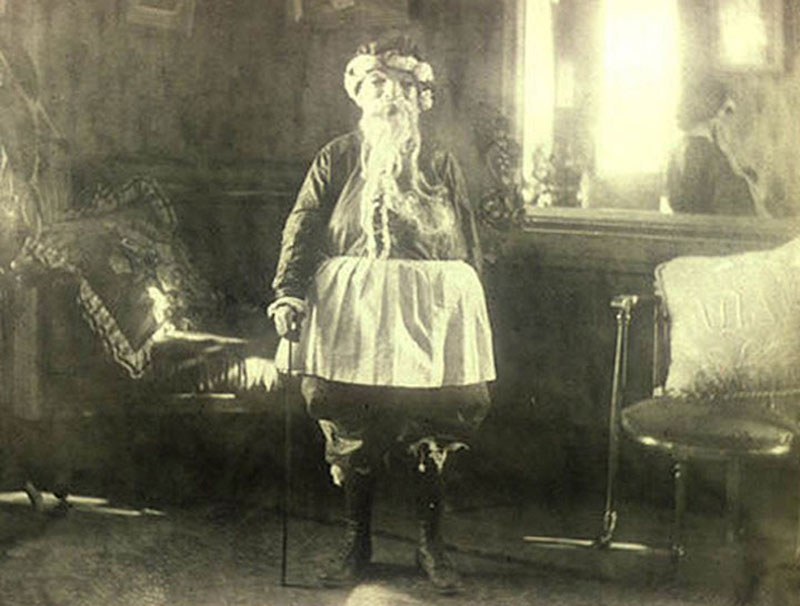
Nicholas, in various countries, was often accompanied by a servant or herald character, such as Zwarte Piet in the Netherlands, Ruprecht in Germany, or the Alpine Krampus. Sometimes he did not appear as a stately old man, but as a more frightening figure, such as Belsnickel, in the Dutch north and Germany. Immigrants to Pennsylvania, the Pennsylvania Dutch (Deutsch, actually, German), took Belsnickel with them and there he took the form of a bewigged and masked figure, in a sort of parody of gentleman’s dress, though he was generally played by a lower class man.
And Belsnickel was only sometimes there to reward good children, or even punish bad ones: in 1831, shopkeeper James L. Morris, in Morgantown, Pennsylvania, described in his diary a visit from several marauding Beksnickels:
“Christmas Eve – a few ‘belsnickels or ‘kriskinckles’ were prowling about this evening frightening the women and children, with their uncouth appearance – made up of cast-off garments made parti-colored with patches, a false face, a shaggy head of tow, or rather wig, falling profusely over the shoulders and finished out by a most patriarchal beard of whatsoever foreign [material] that could possibly be pressed into such service.”
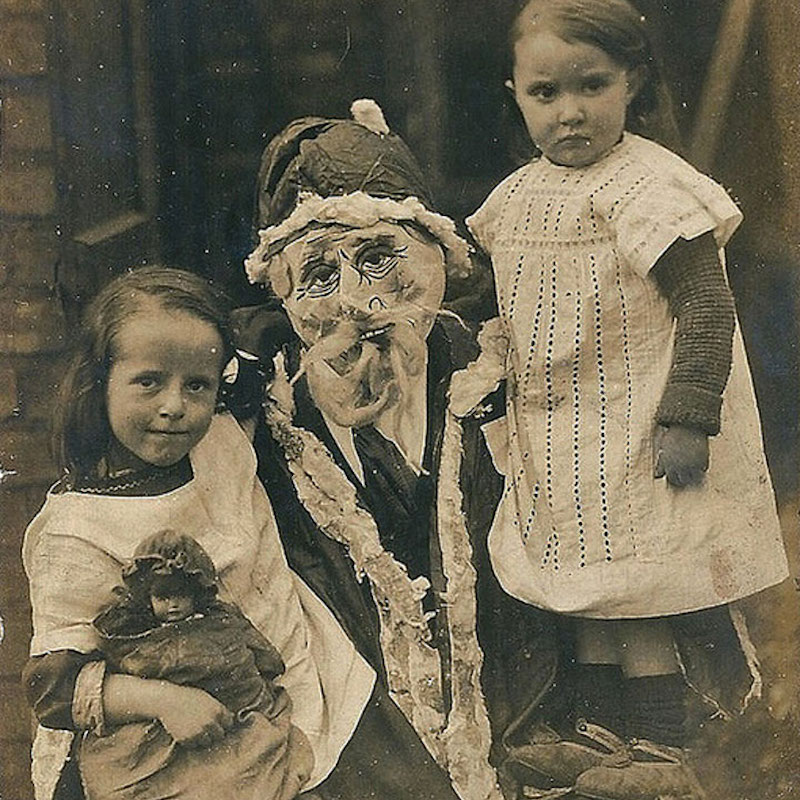
Far from bearing gifts, they often demanded them. There was a strong tradition, in the early 19th century American Christmas, of class resentments being played out via raucous “callithumpian bands,” door-to-door demands, and general drunken disorder, and the disguised nature of Belsnickel provided both licence and cover for boys and youths to take part. But sometimes it was Saint Nicholas himself who was the frightening, disruptive figure, as in the Boerensinterklaas, or Farmers’ Sinterklaas, who was a terrifying, thumping, chain-shaking character, who we’ve written about before.
In the Netherlands, the small seaside town of Zoutkamp has to this day the tradition of the Sinterklaaslopen, or the Sinterklaas Walk, generally celebrated on the Saturday closest to St. Nicholas Eve (5 December). Townspeople go door to door masked and costumed (often in ways that humorously or critically reference local events), visiting homes where the lights are on, where householders must try to figure out their identity by asking questions which the masked walkers can only answer by nodding or shaking their heads, as they aim to hide who they are. On being recognised, they remove their masks to reveal their faces, and receive an alcoholic drink. Those who have been recognised the most are subsequently noticeable by their unsteady walk.
Likewise, on St. Nicholas Eve, children traditionally receive presents from Sinterklaas, often played by a disguised neighbour. (https://turniplanterns.wordpress.com/2020/12/05/visit-from-sint/) That folk memory of masked winter visitors is bound to have merged, as time went on, with the need to disguise a familiar teacher or congregation member for a school or church children’s Christmas party, with the commercial exploitation of Christmas, and with department stores’ need for Santa to have a consistent appearance throughout the season, regardless of who happens to be playing him.
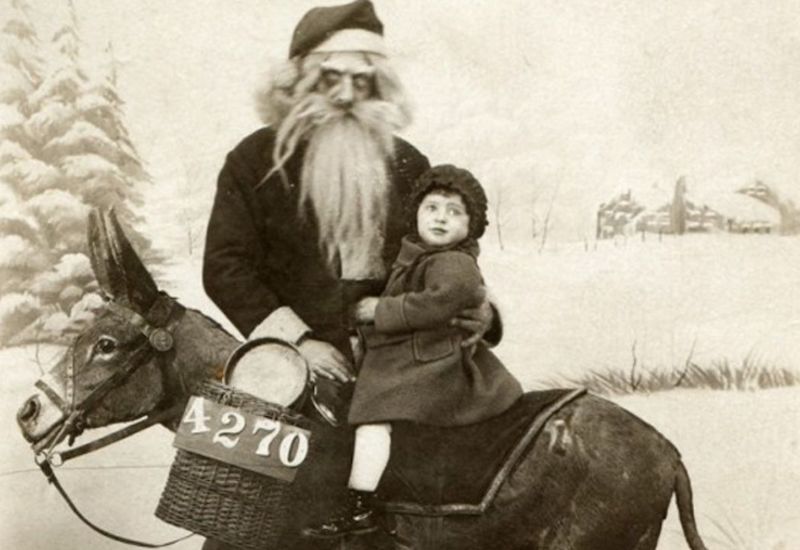
In 2005 or 2006, we went to an event run by the Northern Ireland Dutch Club: the arrival in Belfast of Sinterklaas. In the Netherlands, he arrives by boat from Spain at the end of November, and the Club had done their best to re-enact that – even the Lord Mayor of the time turned up with his chain of office to receive Sint with due pomp. But the performance felt a little thrown together. Several teenagers played Zwarte Piets in blink-182 hoodies, the distinctive hats worn by Moorish servants in Golden Age paintings (and therefore associated with Sint’s servant), and half-hearted blackface – mimicking soot, rather than melanin, per the tradition now thankfully in retreat in the Netherlands.
To provide some context: in the mid-2000s, the annual protests against racist Zwarte Piet performances were beginning to attract international attention, but white Dutch people at the time still, for the most part, resisted change. So we can speculate that the makeshift nature of the costumes allowed for compromise: had they worn full Piet regalia, the barely-there soot makeup might have implied that a political position was being taken. In just the hats, the less conventional make-up could be handwaved due to the lack of commercially available Piet costumes outside the Netherlands.
And this highlighted an interesting thing about Santa and St. Nicholas customs generally: these are child-centred festivals, but they’re not organised by children, so the imagery and behaviour of the gift-giving (or punishing) figure are inevitably shaped by the memories of the adults in a community, and the traditions they grew up with. Masking, guising, features heavily in the northern European Midwinter traditions, like the mummers in Ireland and Britain, and the masks, schebelskoppen, that would feature in northern Dutch shop displays in living memory.
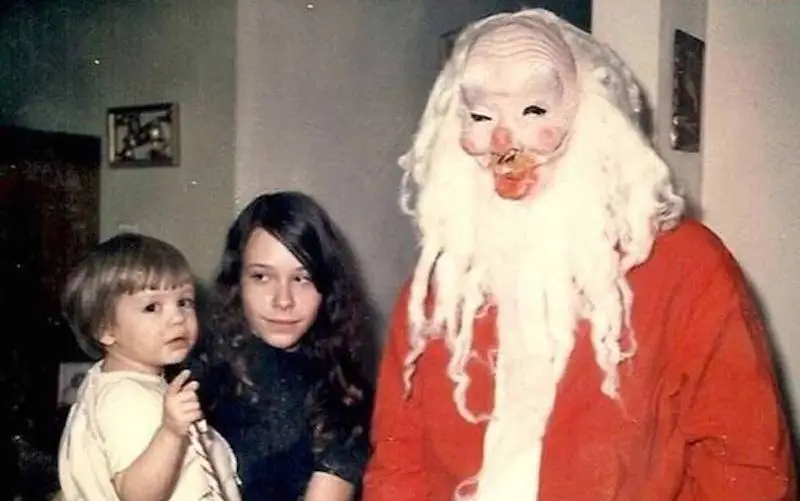
While traditions and customs change, they tend to be preserved longer by diasporic communities. Especially in rural areas without much inward population movement, like the 19th century immigrant communities in America, older folkways are more likely to live on, in a conscious preservation of cultural identity, though eventually adapted through general cultural influences and materials available for costuming – including a creepier, masked Santa.
Of course, in 2021, masks on seasonal visitors have a new and inescapable significance, and with that in mind we wish you all a happy, safe and healthy Christmas season.
ABA
